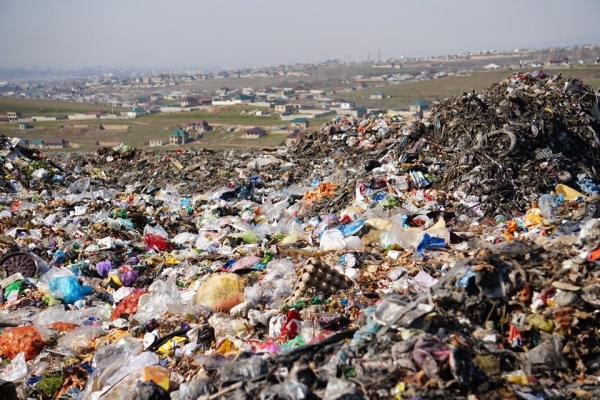
Tajikistan generates over 9 million tons of solid household waste annually, of which 321,890 tons are plastic waste. Every resident of major cities in Tajikistan discards more than 1 kilogram of solid waste per day, including over 100 grams of plastic.
How much plastic do we throw away daily?
Naim Nematzoda, an official with the Committee for Environmental Protection under the Government of Tajikistan, provided detailed statistics on waste generation at a conference addressing plastic waste issues on November 29, 2024.
According to him, cities and districts were categorized into three groups based on the waste generation rate:
- Mega Group — This group includes 10 large cities and districts with a combined population of 4.2 million, including Dushanbe, Istaravshan, Panjakent, Khujand, Hisor, Vahdat, Tursunzoda, Roudaki, and Bobojon-Ghafourov. In these areas, each resident generates 1.013 kg of solid waste daily, 9.5% of which is plastic. This amounts to 148,196 tons of plastic waste annually.
- Medium Group — This group includes 10 cities and districts with a total population of 1.99 million, such as Bokhtar, Kulob, Konibodom, Kushoniyon, Vakhsh, Vose, Danghara, Devashtich, Spitamen, and Jabbor-Rasoulov. In these areas, each resident generates 0.902 kg of waste daily, with 9.5% being plastic. This results in 62,363 tons of plastic waste annually.
- Small Regions — The remaining districts fall into the small regions group, with a combined population of 4.06 million. In these areas, residents generate 0.79 kg of waste daily, resulting in 305 tons of plastic waste annually.
Plastic waste recycling is growing, but still limited
Approximately 8,500 tons (2.6%) of plastic waste is recycled in Tajikistan. More than 267,000 tons (83%) of plastic waste are buried in landfills. Around 46,000 tons are lost during transportation to disposal sites.
According to the Agency for Statistics under the President of Tajikistan, the production of goods from recycled plastic has increased significantly between 2020 and 2023:
In 2023, plastic profile production grew by 250%, reaching 19,300 tons, indicating a major leap in plastic recycling.
Production of metal-plastic products increased by 200%, reaching 596,000 square meters, reflecting greater use of recycled plastic in construction.
Plastic pipe production rose by 132%, reaching 10,600 meters.
Production of plastic items grew by 144%, reaching 150,000 units, and plastic boxes by 151%, amounting to 383,000 units.
Plastic cap production soared by 439%, totaling 193,000 units annually.
The Ministry of Industry and New Technologies reported a rise in enterprises manufacturing plastic and rubber products, reaching 278 facilities in 2022–2023, indicating industry growth.
Production volumes grew from 522,400 tons in 2022 to 533,500 tons in 2023, marking a 6% increase.
Sources of plastic waste
Between 2020 and 2023, Tajikistan imported plastic products from 51 countries, with its main trading partners being Russia and Central Asian states.
Total imports and exports of plastic products amounted to 20,700 tons, with a transaction value exceeding US$31 million.
Environmental experts have proposed solutions to address plastic waste, including banning the production and use of plastic utensils and packaging less than 15 microns thick.




